My husband and I have four children, two who joined our family biologically and two who joined our family through adoption from China. As more children have joined our family, the sibling dynamics have only gotten more interesting, and are almost never what we expected.
When we traveled to adopt Madeleine CaiQun in 2013, her big sister, Miranda, traveled with us. Having her there was invaluable, as Madeleine CaiQun seemed to trust her instinctively. She looked to her to learn how to color, how to throw a ball, and whether bath time was safe or not.
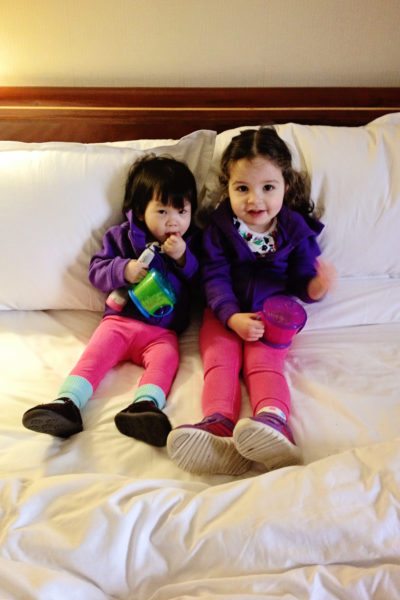
Almost two years after Madeleine CaiQun joined our family, we gave birth to Atticus.
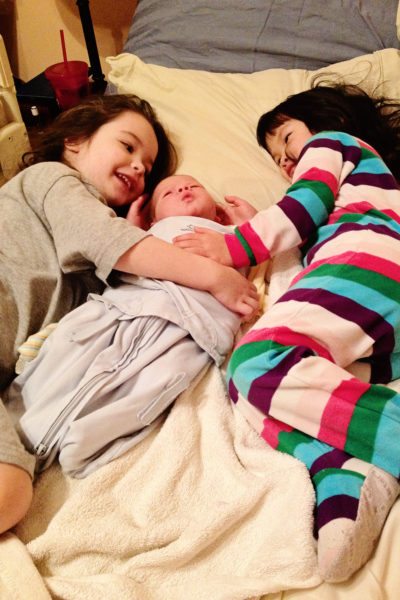
And just two years after that, Madeleine CaiQun and I traveled to China to adopt FangFang.
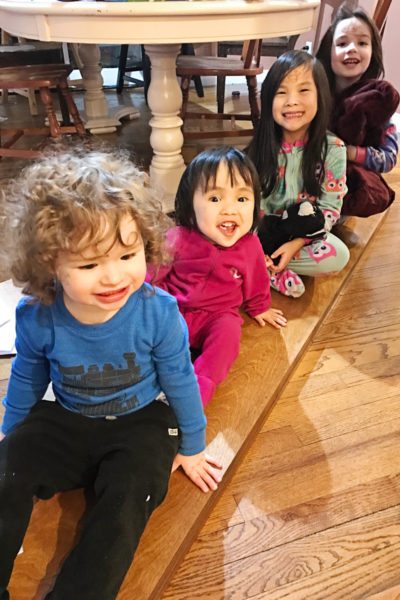
In some ways, the relationships between all of these siblings are similar to the relationships between any other sibling set. I grew up with two brothers myself. We lived through jealousies and moments of solidarity, through conflicts and conflict resolution, through competitiveness and supportiveness, and through times when we couldn’t stand each other and times when we considered each other great friends. I see a lot of those dynamics in the relationships between all of my children.
But there are also additional dynamics at play that are related to the different ways in which our children have joined our family. It’s important to acknowledge those dynamics and be prepared for them so that we, as parents, are better equipped to walk with our children through them as they arise.
Some are very concrete and specific – I remember the feeling of my breath catching in my throat the first time I heard one of my children announce maliciously that we should send another of our children back to an orphanage.
My child, I thought, you’ve seen the inside of an orphanage. How is it possible that you would wish that fate on anyone, let alone this precious sister of yours?
But the offender was, herself, a small child. She was small when she experienced an orphanage, and she was still small when she declared that she wanted her sister returned there. She didn’t understand the true gravity of what she was saying. So much of parenting comes down to teaching our children to understand. We used that moment, as we’ve used so many others, as an opportunity to move toward learning and growth.
And sometimes the opportunities for learning and growth are not so much discreet moments as they are threads woven throughout the entire fabric of the family’s existence.
Patty Cogen, in Parenting Your Internationally Adopted Child, defines the concept of a child’s family age as “the length of time the child has been a member of the family.” One thing we’ve noted is that our children’s relationships with each other are affected by each child’s chronological age, developmental age, and family age.
That means that a child who is chronologically 7 but has a family age of 5 may interact with her 3-year-old brother as if they are merely 2 years apart in age, instead of 4. As a mom, I need to hold in mind all of those ages that are wrapped up in one small child as I parent my kids. I need to have realistic expectations and meet each child where they are in terms of their developmental or family ages, not expecting those ages always to match up with their chronological ages.
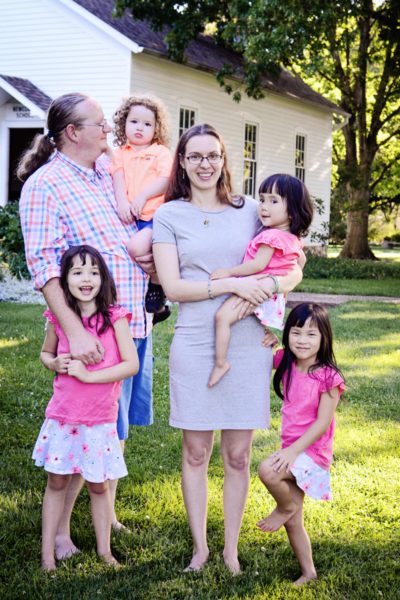
In our family, that dynamic is further complicated by the fact that we have both virtual twinned and adopted out of birth order – and each of our children have different strengths and weaknesses. That means that there is no child in our family who can claim to have, across the board, the same relationship to all of their siblings across all of the areas of chronological age, developmental age, and family age.
And their relative positions change at different times and in different areas. At times, the effects of this seem beautiful. Siblings with different strengths help each other in different ways, sharing the gifts God has given each of them to build everyone up to a better place.
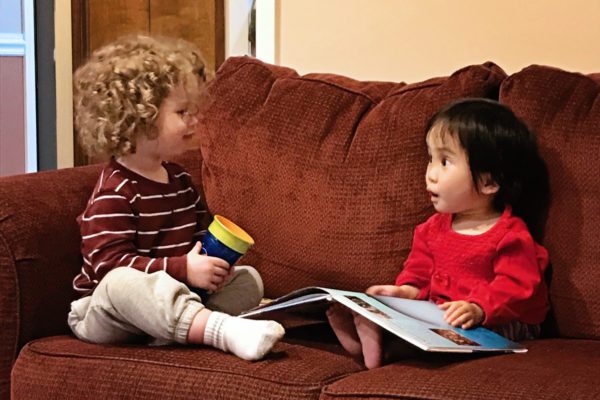
At other times, it is, well, complicated. A child who is older may be frustrated by the fact that a younger sibling can do something she can’t. Each child may have unrealistic expectations of the others, and that’s frustrating for everyone.
Sometimes those unmet expectations have nothing to do with age and development but exist simply by virtue of our children all being unique individuals. But sometimes the particular ways in which that uniqueness will manifest itself are unexpected. For example, my two children from China have very different thoughts and feelings about China and their ties to their birth country and its culture, to the point where each is perplexed by the other’s thoughts and feelings.
An additional noteworthy factor in sibling relationships can be that children who have spent time in orphanages sometimes display what are called “orphanage behaviors.” These would include things like hoarding food and toys, seeking to be in control of all things, and hyper-vigilance and a hair trigger for the fight/flight/freeze response. Those behaviors come out within the family context, and we as parents need to be prepared to help walk with both the child exhibiting those behaviors and their siblings, who are most definitely affected by them.
The fact that one of our children also has a life-long special need that requires regular care also plays into sibling relationships. This child sometimes uses a wheelchair, and I take her to weekly physical therapy, as well as additional doctor appointments. That has, in part, truly enriched our other children’s lives and perspectives. My kids don’t see wheelchairs or people who use them as intimidating – they see wheelchairs as awesome, regular-part-of-life mobility aids. They see physical therapy exercises as great fun, and generally everyone participates in physical therapy at home. The other kiddos are FangFang’s biggest encouragers, and no one cheered harder than her siblings when she began to crawl. She is motivated by them, and they are thrilled at each milestone she reaches.
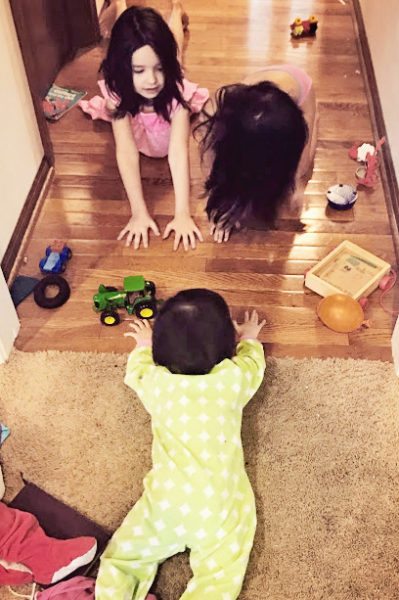
But there are real costs to our other kids, as well, as my husband and I devote significant time and energy to obtaining the care that FangFang needs. This past summer, FangFang fractured her tibia badly on the 4th of July, and my big kids had to miss the fireworks show they’d been anticipating. I actually wrote a large portion of this blog post while in the surgery waiting room of the Children’s Hospital where our daughter gets most of her care – 5 hours away from our home, where my other children were. This was my third trip there without my other kiddos in the last 8 months, and they were, understandably, not thrilled for me to be leaving them for several days yet again.
We expect the frequency of these out-of-state trips to diminish after this year, but they’ll always be part of the care our daughter requires. Sometimes our other kids reap the benefits, too – we all traveled to the hospital together as a family for our daughter’s first visit right after she got home, and our other kids got to enjoy new places in a new city – it was a bit of a family vacation. But for these times when just FangFang and I travel for surgeries, my other kids understand the necessity of their occurrence, but don’t always like them.
And that’s understandable. It would be foolish for us to pretend that there aren’t real costs to them, that there aren’t things they miss out on while we make it a priority to make sure our one daughter is getting all the medical care she needs. We are always open to having real, honest conversations with all of our kids about how they feel about that and about anything else. It was a bummer that they had to miss fireworks. I was sad to be away from them again (especially over my youngest’s birthday this week!!).
When one of my children comes to me and says, “I just feel like you don’t have so much time for me, because you’re so busy with the little kids,” I can either hold space for that, talk with her about it, and strategize with her about how I can give her the time she needs and reassure her of how much she means to me, or I can shut her down – and what I do is going to have long-term implications for our relationship.
We’re right at the beginning of some very intense weeks ahead. FangFang cried for her brother and sister every time she got poked for a blood draw or anyone did anything unpleasant to her in the hospital – but that doesn’t mean that she was thrilled with the reality of splitting my attention multiple ways once she and I arrived home.
She came out of this surgery with 3 limbs mostly unusable for the next 4-6 weeks. And when any one of my children requires extra care, the others pick up on that. And because they are small children, instead of becoming self-sufficient and giving me extra space to care for said child, each one of them, in their own ways, expresses their own need for some extra TLC and reassurance of my love and adoration. This week, that meant that within the first hour of my arriving home from my trip with FangFang, there were a lot of hugs, but also nearly every one of my children had had a tantrum or a meltdown about something.
I expect to do a lot of snuggling, offer a lot of encouragement, make a lot of favorite foods, and play a lot of cooperative games over the next couple weeks.
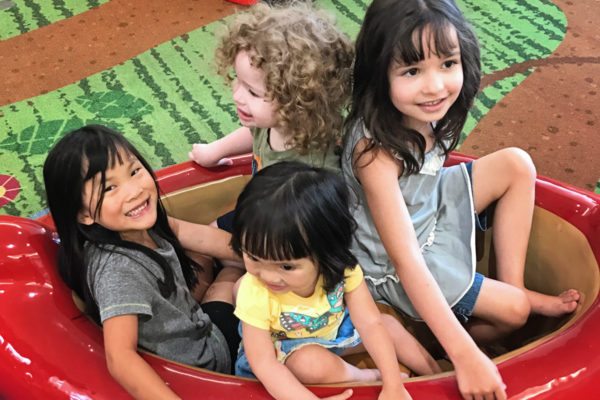
I’ll need to meet both physical needs and emotional needs of each and every child – and that can be exhausting, but that’s what we sign up for as parents. And, as in so many other areas, adoption parenting is often like “normal” parenting on steroids. It’s intense.
But as we meet each child’s individual needs, we provide the context in which it is possible for sibling relationships to thrive.
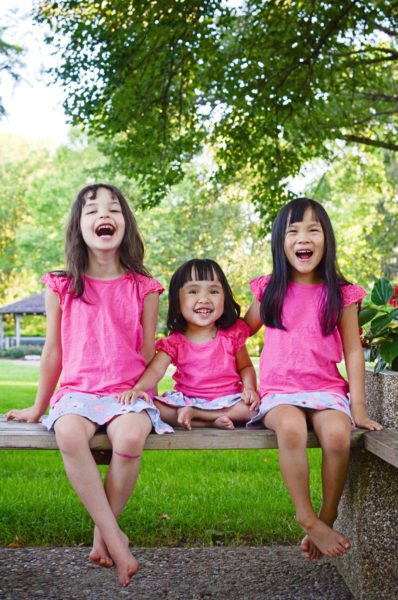
I can’t control their relationships. Children are not machines, and it’s never as simple as input A creating desired result B. But I can nurture each of them individually and give the opportunities to build their relationships with one another and pray for the growth in those bonds. I hope and pray that my children will have deep lifelong bonds with each other, and I hope and pray that what my husband and I are doing now is creating an environment and offering guidance that will encourage growth in the foundations of those relationships for years to come.
– guest post by Alison: email || blog || facebook || instagram



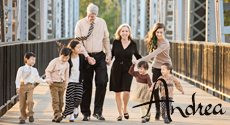
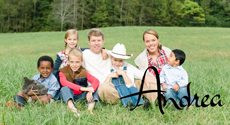


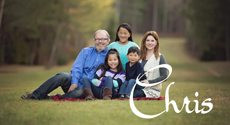
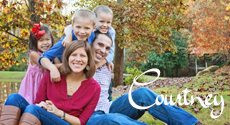
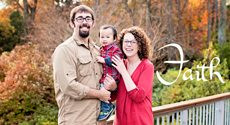
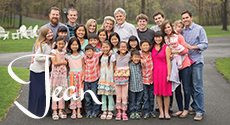
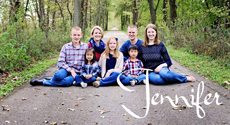
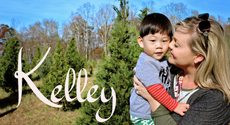

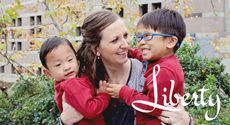
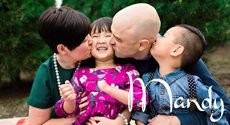

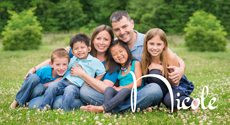

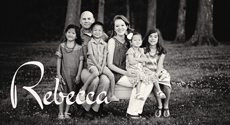


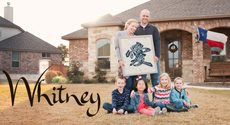


Leave a Reply